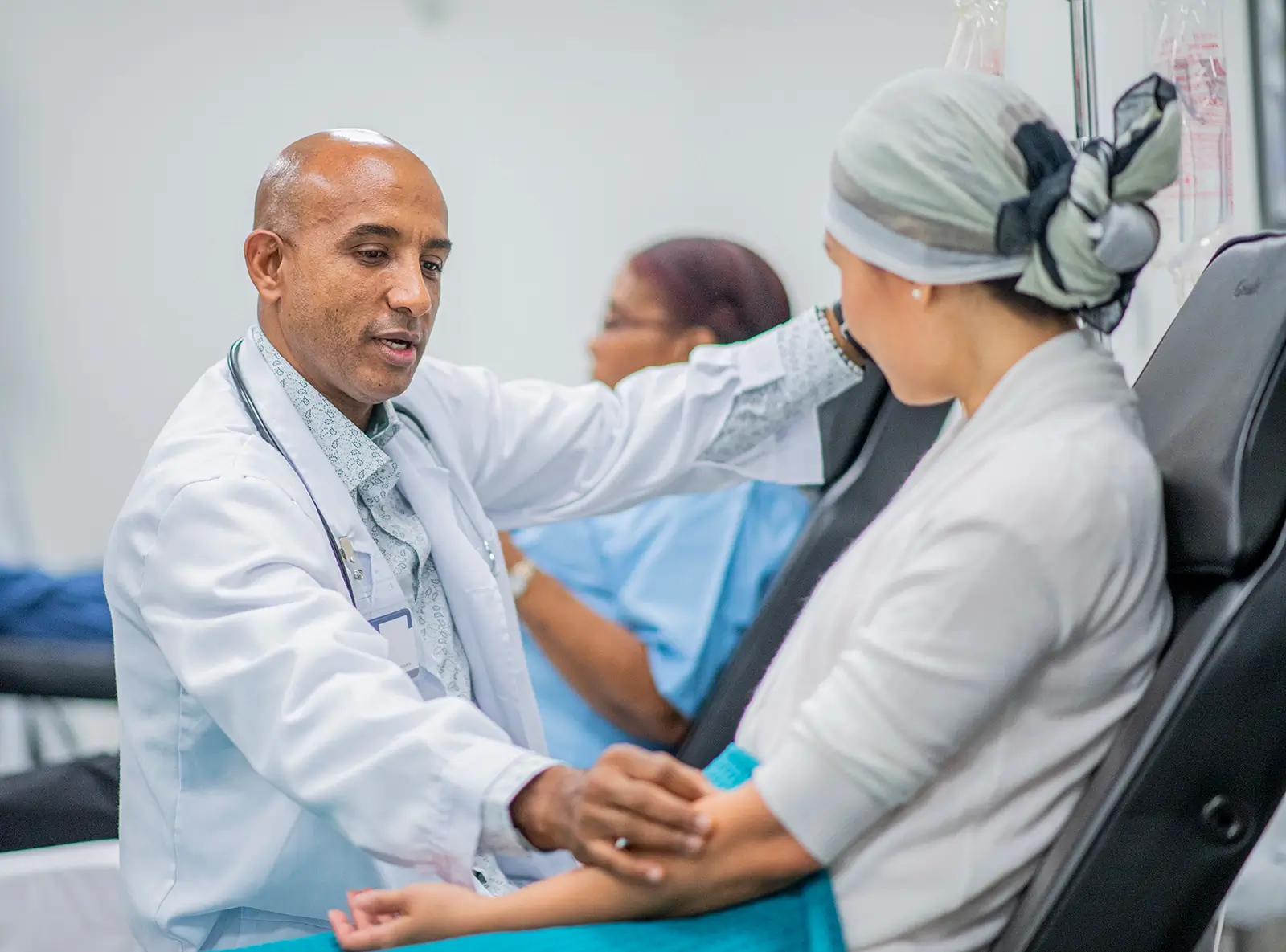Future directions in liquid biopsy technology
Future directions in liquid biopsy technology
Liquid biopsies have evolved from a niche diagnostic tool to a versatile instrument in cancer care. Initially limited to detecting specific mutations in advanced lung cancer, these noninvasive tests now offer real-time insights into tumor genetics across multiple cancer types. Recent technological advancements have dramatically improved the sensitivity of liquid biopsies, enabling earlier diagnosis, precise treatment selection and enhanced disease monitoring.
The Evolution of Liquid Biopsies in Precision Oncology
The term liquid biopsy often refers to genomic analysis of DNA fragments shed from cancer cell genomes, the so-called circulating tumor DNA (ctDNA). However, early versions of liquid biopsies were intended to study circulating tumor cells (CTC).1 Meanwhile, early success and wide adoption of NGS profiling of solid tumor biopsies—prompted by technological innovations and rapid drop in sequencing cost—helped launch the new therapeutic discipline of precision oncology. This brought dramatic changes to the treatment landscape of several cancers, with adenocarcinoma variant of non-small cell lung cancer (NSCLC) at the forefront of such progress.2
These advances in DNA sequencing shifted the focus of liquid biopsies from CTC toward ctDNA analysis. This ushered in an era of broad utilization of plasma ctDNA for diagnostic work-up, therapeutic response monitoring for metastatic disease, prognostication, minimal residual disease early detection and finally early detection of undiagnosed cancer.3
Advances in liquid biopsy sequencing
Efforts to replicate the early success of tissue next-generation sequencing (NGS) using liquid biopsies initially faced hurdles due to the scarcity of ctDNA within vast quantities of mostly benign cell-free DNA (cfDNA). Compounding this issue were genomic alterations originating from outside the tumor, such as germline mutations and non-tumor derived mutations from clonal hematopoiesis (CH), which appear in 10% of ctDNA from individuals 65 years and older.4
Recent advances, including deep and redundant sequencing and sequencing error suppression algorithms, have significantly narrowed the gap between tissue and liquid NGS results. Despite early challenges, liquid biopsies have several advantages over tissue biopsies: they are minimally invasive, can overcome the limitations of intra-tumoral heterogeneity and enable serial monitoring for emerging acquired resistance mutations, as well as assessment of tumor-fraction to measure treatment response.
Improved sequencing sensitivity has also lowered the limit of detection to as little as 0.01% mutant allele frequency, while concurrent sequencing of genomic DNA from white blood cells can identify non-cancer mutations of CH origin.5 These developments have opened the door for multiple novel applications of liquid biopsies in the adjuvant setting phase of cancer, where ultra-sensitive assays are needed to detect minimal/molecular residual disease (MRD).
These assays fall into two major categories. With the tumor-informed approach, the design of personalized probes is guided by comprehensive genomic analysis of the tumor. With the tumor-agnostic approach, mutational analysis is supplemented by data from DNA methylation, DNA fragment size, multi-analyte analyses, etc.
Expanding applications for early detection
Serial ctDNA monitoring for MRD detection in the adjuvant setting could identify patients at risk of relapse several months prior to radiographic detection of such relapse. This approach can guide patient selection to receive adjuvant therapy versus active surveillance. It also allows for treatment adjustments, such as intensification or de-escalation. All these applications are currently being evaluated through ongoing clinical trials.
Similar ctDNA-based approaches could be applied to population screening for early detection of lung, breast, colon, prostate and cervical cancers. In these cases, ctDNA detection could supplement existing surveillance procedures, including low-dose CT scan or mammography.
Extending this capability to other malignancies for which there are no approved surveillance guidelines is the goal of a new generation of genomic tests known as multi-cancer early detection (MCED) assays, currently being developed by multiple biotech companies.
Moving toward advanced precision oncology trials
The trajectory of liquid biopsy technology points toward an increasingly central role in precision oncology. As sequencing techniques and data analysis methods continue to advance, we can anticipate expanded applications across the cancer care continuum. The potential for liquid biopsies to guide personalized treatment strategies, detect minimal residual disease and facilitate early cancer screening represents a significant step forward in oncology. While challenges in standardization and result interpretation persist, ongoing research and clinical trials are likely to further validate and refine these applications, ultimately improving patient outcomes in cancer care.
If you are interested in precision oncology research, contact us to explore our solutions.
References
- Pantel K, & Alix-Panabières C. (2010). Circulating tumour cells in cancer patients: challenges and perspectives. Trends in molecular medicine, 16(9), 398-406. https://doi.org/10.1016/j.molmed.2010.07.001
- Walter AO, Sjin RTT, Haringsma HJ, et al. (2013). Discovery of a mutant-selective covalent inhibitor of EGFR that overcomes T790M-mediated resistance in NSCLC. Cancer discovery, 3(12), 1404-1415. https://doi.org/10.1158/2159-8290.CD-13-0314
- Caputo V, Ciardiello F, Corte CMD, Martini G, Troiani T, & Napolitano S. (2023). Diagnostic value of liquid biopsy in the era of precision medicine: 10 years of clinical evidence in cancer. Exploration of targeted anti-tumor therapy, 4(1), 102–138. https://doi.org/10.37349/etat.2023.00125
- Genovese G, Kähler AK, Handsaker RE, et al. (2014). Clonal hematopoiesis and blood-cancer risk inferred from blood DNA sequence. The New England Journal of Medicine, 371(26), 2477–2487. https://doi.org/10.1056/NEJMoa1409405
- Alese OB, Cook N, Ortega-Franco A, Ulanja MB, Tan L, & Tie J. (2022). Circulating Tumor DNA: An Emerging Tool in Gastrointestinal Cancers. American Society of Clinical Oncology educational book. American Society of Clinical Oncology. Annual Meeting, 42, 1–20. https://doi.org/10.1200/EDBK_349143









